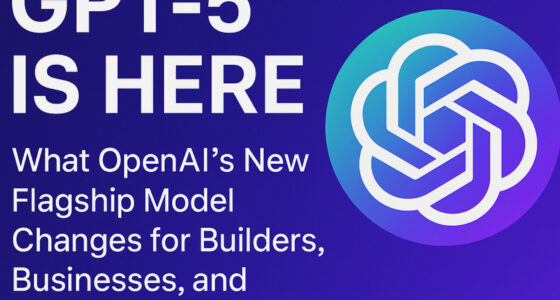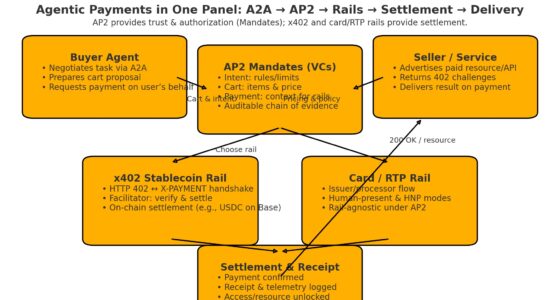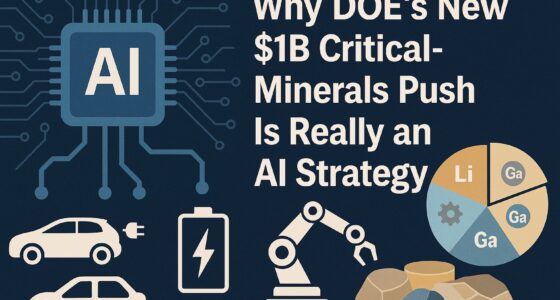OpenAI CEO Sam Altman just gave a wildly optimistic forecast for today’s students: in about 10 years, fresh college grads could be heading off‑planet for “some completely new, exciting, super well‑paid” work. He said it in a long, wide‑ranging conversation with journalist Cleo Abram after OpenAI’s GPT‑5 launch, adding that some of those people could very well be leaving on a mission to explore the solar system… in some completely new, exciting, super well‑paid roles. Business InsiderYouTube
It’s a bold picture. It’s also not as far‑fetched as it sounds—if a few big space milestones land on time.
What Altman actually said (and why the phrasing matters)
Altman wasn’t promising a guaranteed cosmic commute for the class of 2035; he used “could very well be”, not “will be.” Still, it’s in character. In a recent essay, he sketched a 2030s in which breakthroughs stack so quickly that we might “go from solving high‑energy physics one year to beginning space colonization the next.” That’s the worldview underpinning his space‑jobs prediction. Business InsiderSam Altman
The runway between now and 2035
1) Return to the Moon with crews on deck.
NASA is targeting April 2026 for Artemis II, the first crewed lunar flyby since Apollo, and mid‑2027 for Artemis III—the mission that aims to put astronauts back on the surface using SpaceX’s Starship Human Landing System (HLS). Axiom Space is building the next‑gen lunar spacesuit for those surface EVAs, and NASA’s Gateway station is slated to circulate the Moon as a long‑term work hub. If these pieces hold schedule, a lot of “real jobs in space” suddenly come into view. NASA+4NASA+4NASA+4
2) A hand‑off from the ISS to commercial stations.
The International Space Station is planned to operate through 2030–31, with NASA selecting SpaceX to develop a U.S. deorbit vehicle for the station’s controlled retirement. In parallel, NASA is steering a transition to commercial low‑Earth‑orbit (LEO) stations—effectively shifting from “owner‑operator” to “customer.” That shift, now getting fresh funding and contracting attention, is the seedbed for lots of new orbital jobs. NASA+3NASA+3NASA+3
3) Building the lunar internet—and traffic control.
Work is underway on LunaNet, an interoperable lunar communications and PNT (positioning, navigation, timing) architecture. Nokia and Intuitive Machines, for example, integrated a lunar 4G/LTE payload for the IM‑2 mission, validating elements of surface networking. Meanwhile, the Space Force and Air Force Research Lab are pushing cislunar space‑domain awareness—think “air‑traffic control” beyond GEO—with milestones like the Oracle‑M propulsion hot‑fire. These are the plumbing and safety systems that make a real lunar economy possible. NASAioag.orgNokia Corporation | Nokiaafrl.af.mil
4) Early signs of off‑Earth industry.
In‑space manufacturing is moving from demo to business case. Varda Space Industries has flown and returned multiple capsules crystallizing drugs in microgravity and just raised a large round to scale the model. If even a few use‑cases prove economically compelling, they create demand for on‑orbit process engineers, quality leads, and mission operators. ReutersWall Street Journal
5) Surface infrastructure is getting real R&D dollars.
NASA is funding technologies to use lunar regolith for construction; ICON’s Project Olympus is a headline example—a multi‑year, ~$57M Phase III SBIR to prototype off‑world 3D‑printed pads, roads, and habitats. If Artemis ramps into sustained surface ops, you’ll need robotics techs, construction systems engineers, and materials scientists…on the Moon. NASA
6) NASA’s own roadmap still points to Mars in the 2030s.
The agency continues to frame human Mars missions “as early as the 2030s.” That doesn’t guarantee a ticket, but it does shape investments in autonomy, life support, power, and comms that spill over into jobs all along the Earth‑Moon‑Mars pipeline. NASA
Where it sits in the conversation
Altman’s “space jobs” comment comes during a broader point that today’s 22‑year‑olds are unusually well‑positioned to benefit from AI, and that he’s more worried about late‑career workers adapting than about new grads. Business Insider’s write‑up captures that framing around the quote. Business Insider
Is it realistic by ~2035?
“Exploring the solar system” covers a lot—lunar missions, cislunar operations, deep‑space probes, Mars prep, etc. Here’s the near‑term program reality:
- Moon (Artemis program): NASA currently targets Artemis II (crewed lunar flyby) for April 2026, with Artemis III (first lunar landing of the program) following after that timeline. Slips are common, but crewed lunar missions in the late 2020s look plausible. NASASpace
- Mars (crewed): NASA describes human Mars missions as “as early as the 2030s.” That’s the official, cautious language; many engineering hurdles remain. NASA
So: by 2035, it’s credible that some brand‑new grads could step into well‑paid, space‑adjacent roles (on‑orbit manufacturing, lunar surface ops, cislunar traffic, autonomous robotics/AI ops for missions, private space stations). Whether fresh grads will literally “leave on a mission to explore the solar system” depends on how quickly crewed programs and commercial stations scale—but the broader trend line (more missions, more private operators, more AI‑heavy mission roles) supports the spirit of his prediction. NASASpace
So…what are these “completely new” jobs?
Here’s a grounded preview of roles that could plausibly exist—and pay handsomely—by the mid‑2030s if the above milestones line up:
- Lunar network architect / PNT engineer — designing and operating LunaNet nodes, relays, and timing services for missions and surface logistics. NASAioag.org
- Cislunar traffic & safety operator — monitoring trajectories, deconflicting orbits, and coordinating maneuvers for spacecraft across Earth‑Moon space. afrl.af.mil
- On‑orbit manufacturing lead — running fully or semi‑autonomous production lines in microgravity for specialty pharma or materials. Reuters
- Lunar construction robotics specialist — deploying and maintaining regolith‑based 3D printers, autonomous graders, and inspection drones. NASA
- Gateway / station systems engineer — life support, thermal, power, and autonomy for a continuously crewed cislunar outpost or commercial LEO station. NASA+1
- AI mission‑ops designer — integrating onboard autonomy and ground‑based decision support for multi‑vehicle swarms and long‑duration crews—an area NASA is already formalizing. NASA+1
Note the throughline: AI is the force multiplier. Altman also argued that tiny teams—and sometimes a single person—will be able to build billion‑dollar companies on the back of AI. If that’s even half‑true, the space sector (where latency, autonomy, and data deluge are constants) is an obvious beneficiary. Business Insider
What could derail the prediction
Space is hard, and schedules slip. Artemis II and III already moved to 2026/2027 to work through heat‑shield, battery, and environmental control issues. NASA’s inspector general has also warned about risks in the ISS transition; if commercial stations aren’t ready when ISS retires, a gap in LEO could slow momentum. Budgets, geopolitics, and launch cadence will all factor in. Translation: Altman’s timeline is plausible, not preordained. NASA+1NASA Office of the Inspector General
If you’re a student plotting a path to “space work” in 10 years
- Blend domains. Pair aerospace/ME/EE with controls, robotics, and applied AI—the combinations employers can’t hire fast enough. NASA’s own AI inventories and distributed‑autonomy work show where the puck is going. NASA+1
- Think systems and standards. Comms/PNT (LunaNet), safety, and interop are the scaffolding of a lunar economy. People who can design, certify, and operate them will be indispensable. NASA
- Get ops experience. Internships or competitions that simulate autonomy and off‑world constraints (lunar autonomy challenges, swarm ops) are gold. lunar-autonomy-challenge.jhuapl.edu
Bottom line
Altman’s space‑jobs soundbite grabbed attention because it’s audacious—and because, this time, the scaffolding for a genuine off‑Earth workforce is materializing: crewed lunar missions, commercial stations, lunar networking, space‑domain awareness, in‑space manufacturing, and AI‑first mission ops. If those pillars stand up over the next decade, then yes: by 2035 it’s entirely reasonable to imagine some new grads stepping into “super well‑paid, super interesting” roles that just happen to be in space. NASA+2NASA+2afrl.af.milReuters
Sources: Sam Altman’s remarks on Cleo Abram’s Huge Conversations (and contemporaneous reporting), plus current NASA, U.S. Space Force, and industry documentation linked throughout. YouTubeBusiness Insider
Ask ChatGPT








